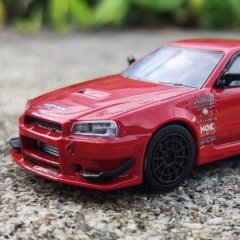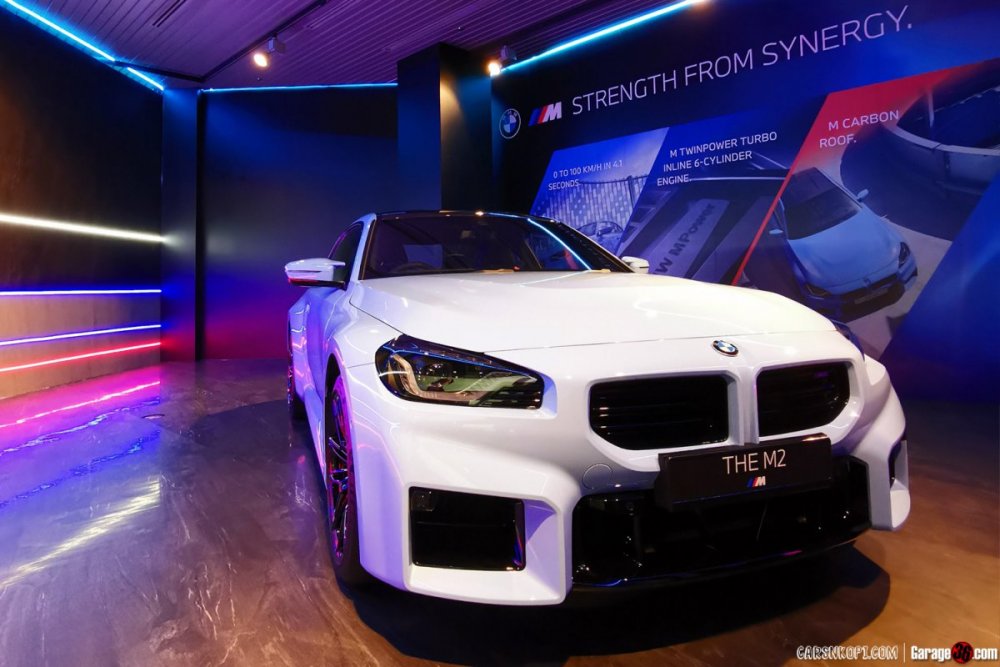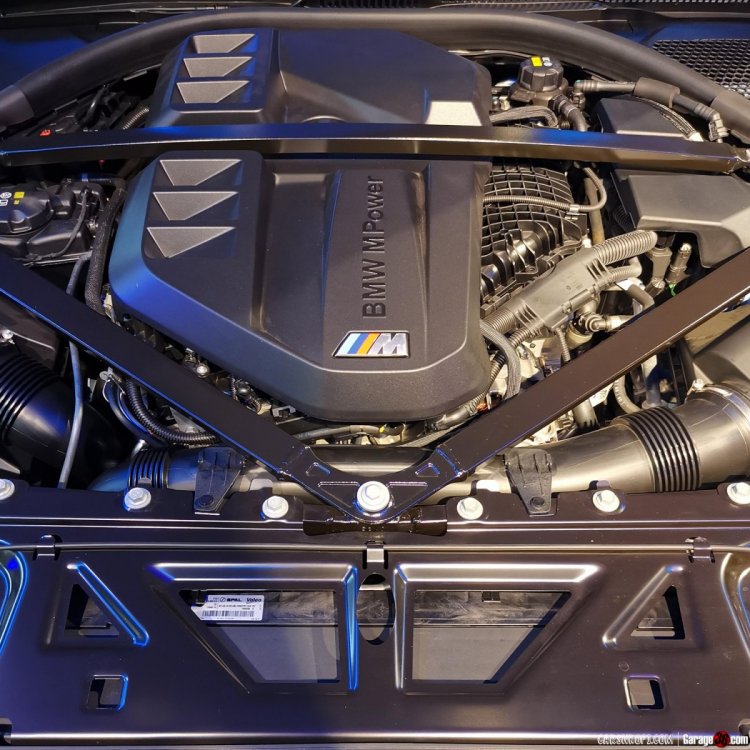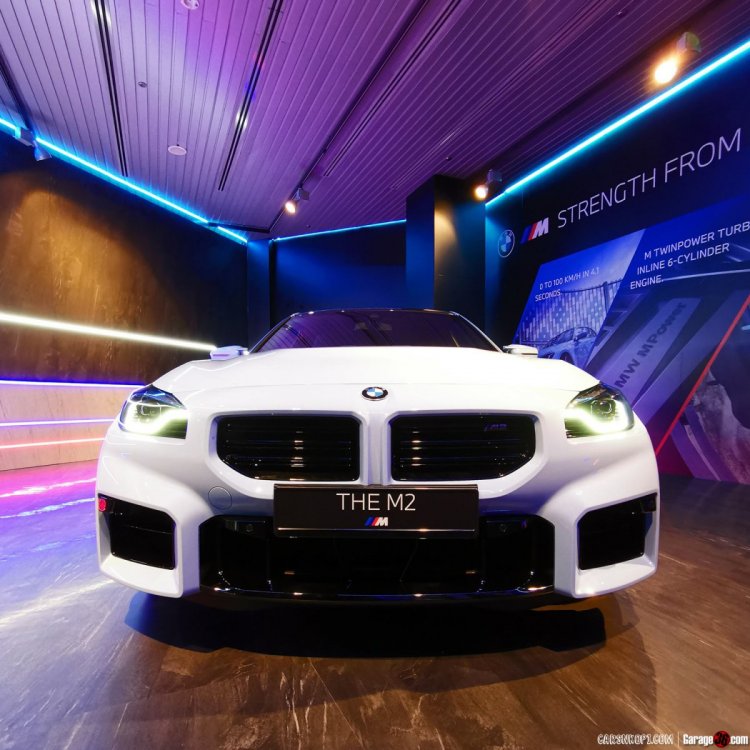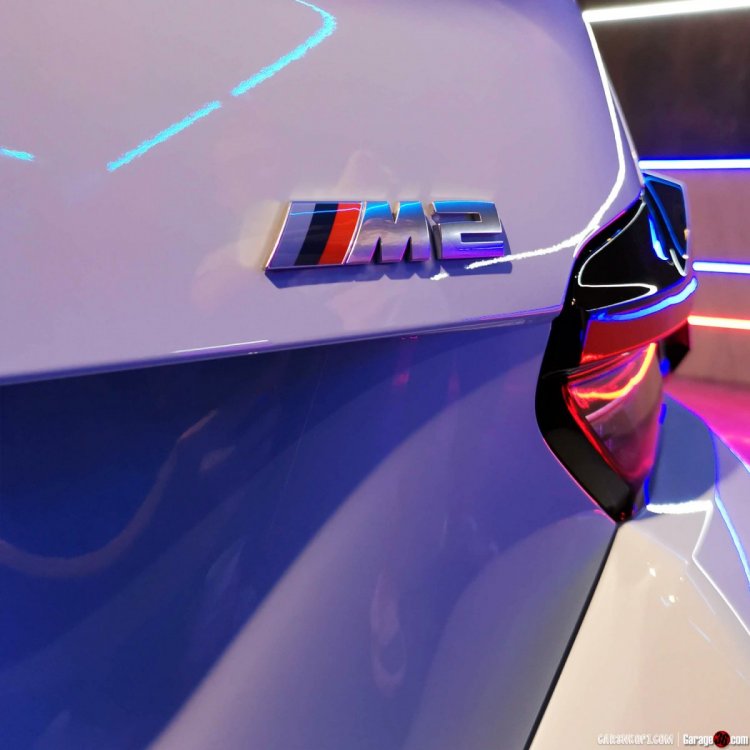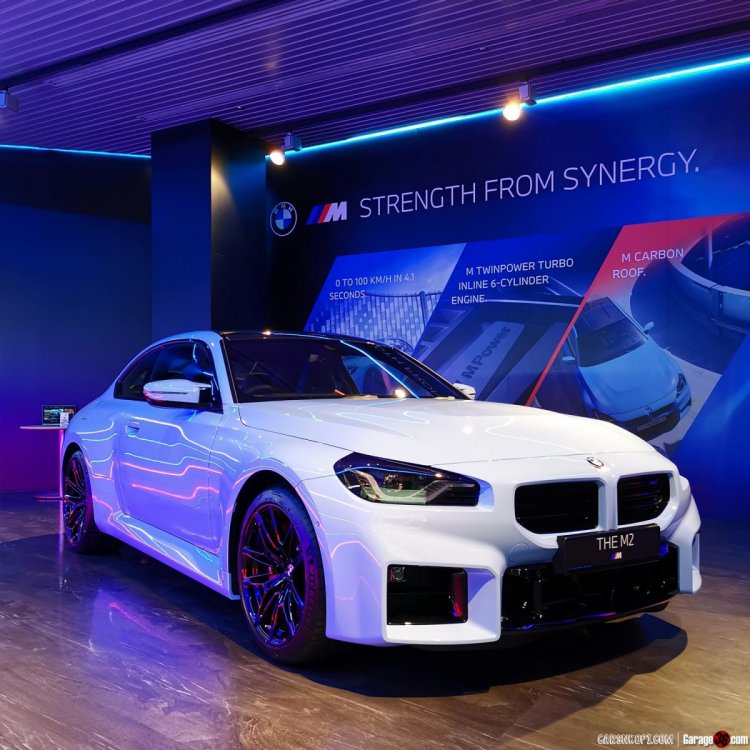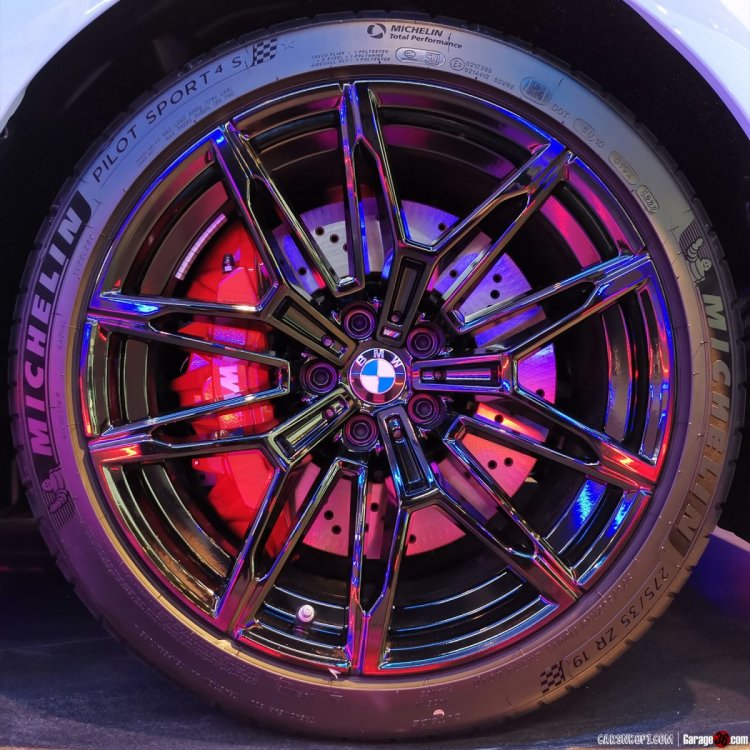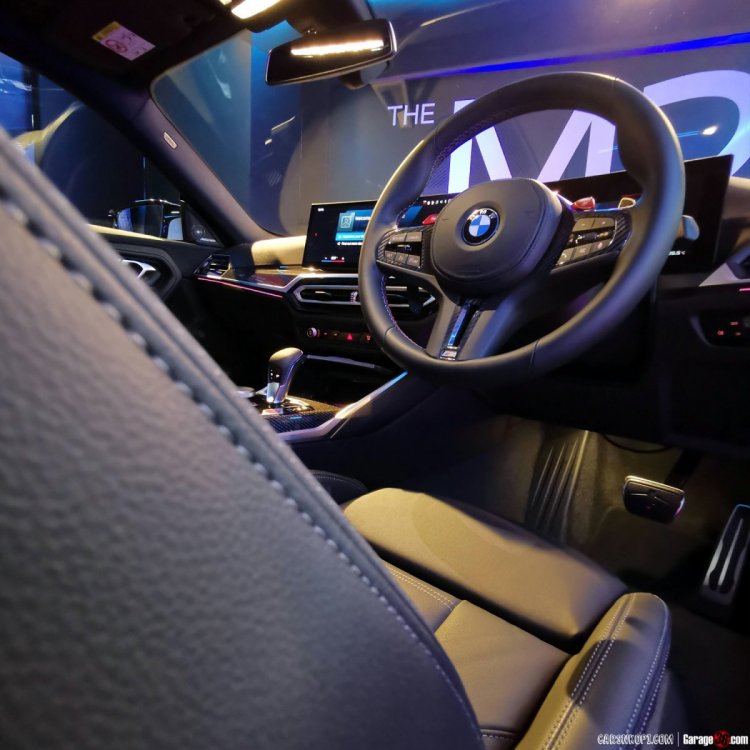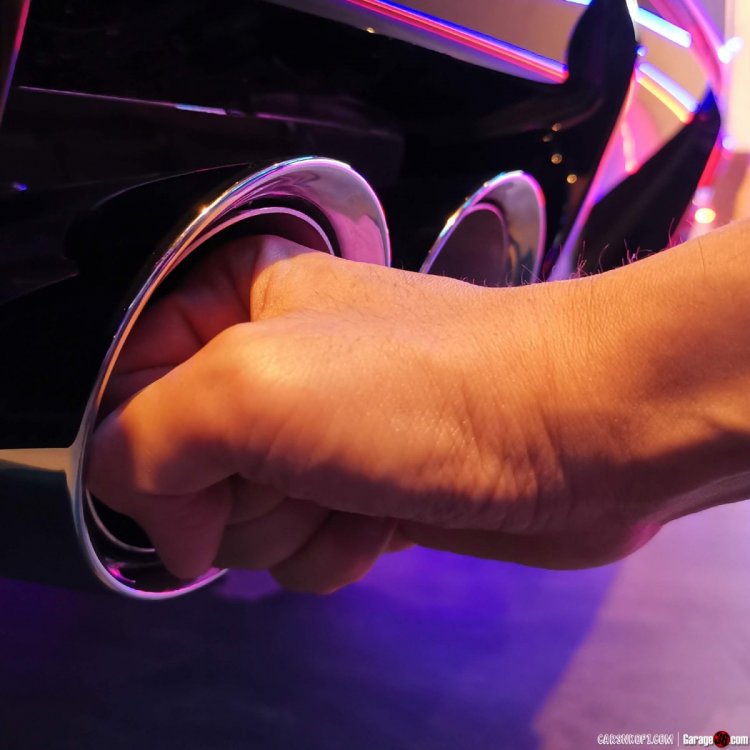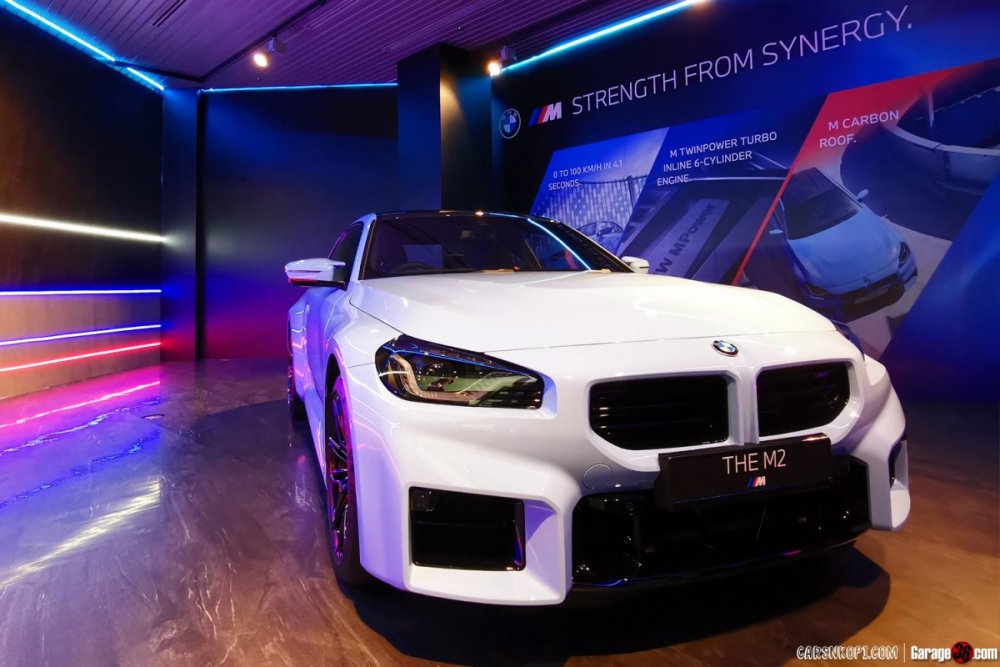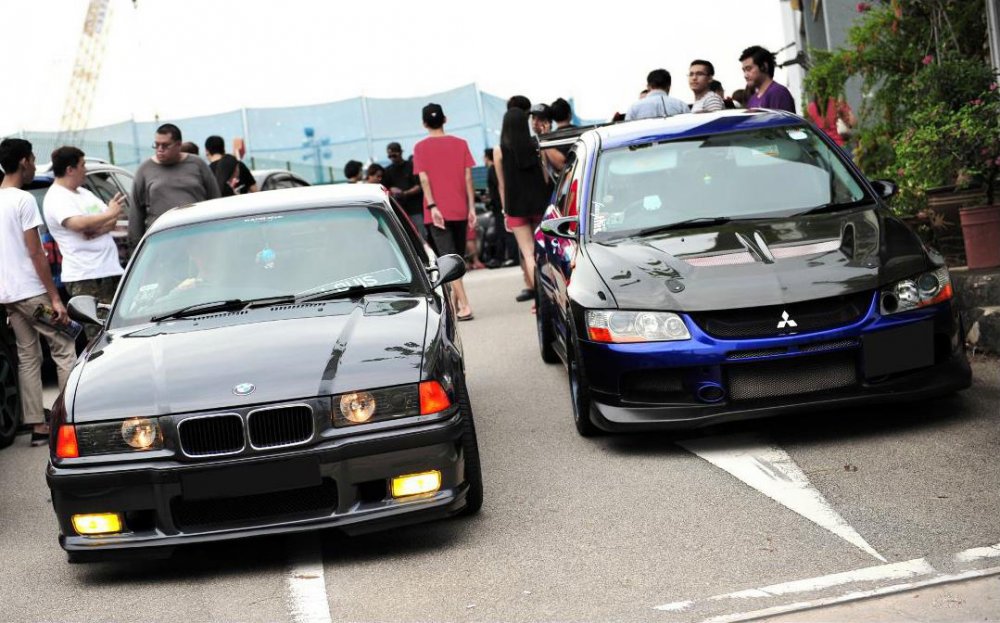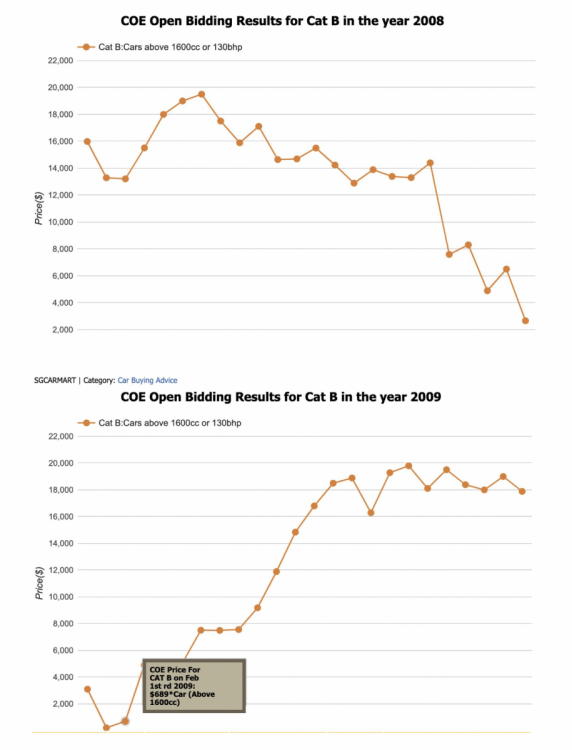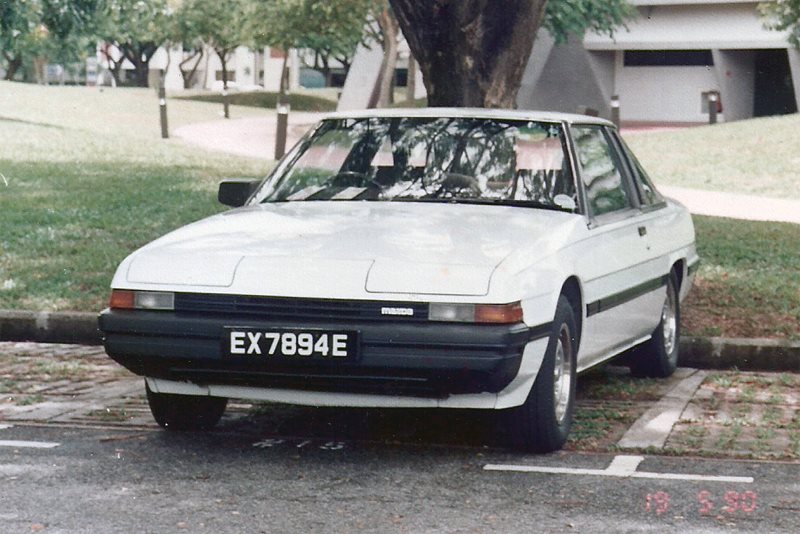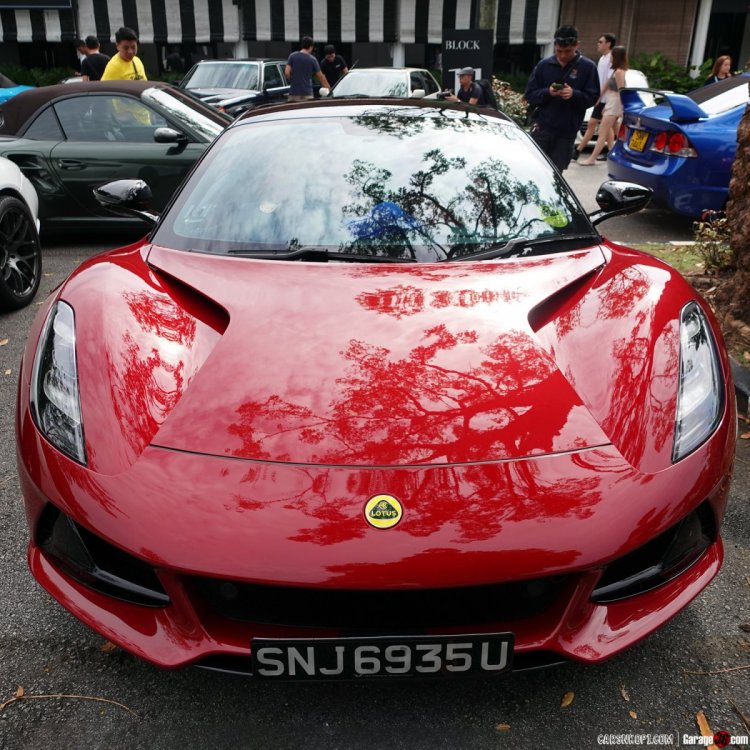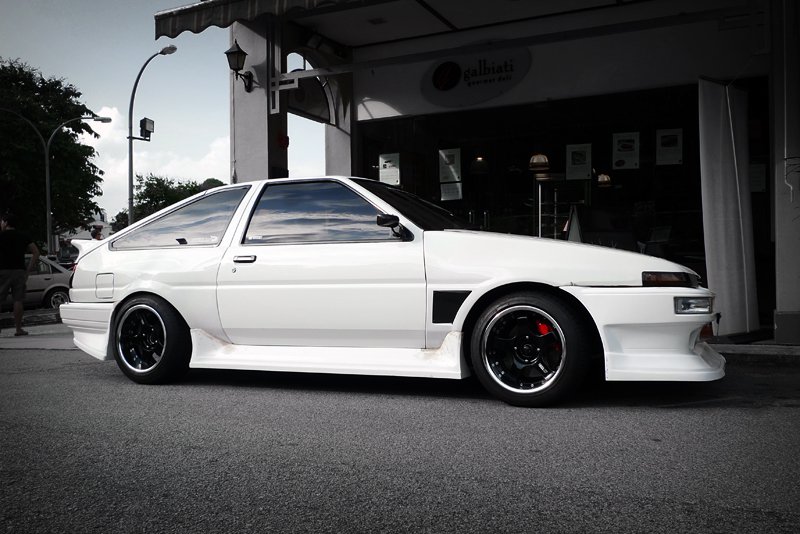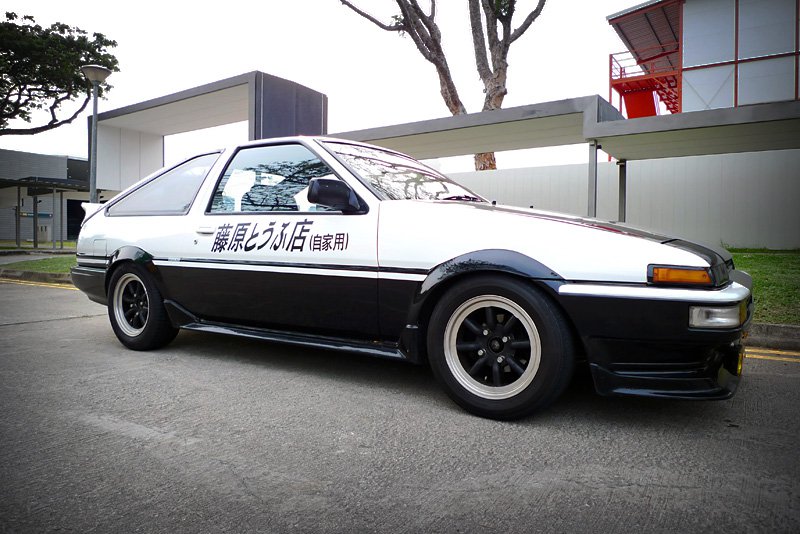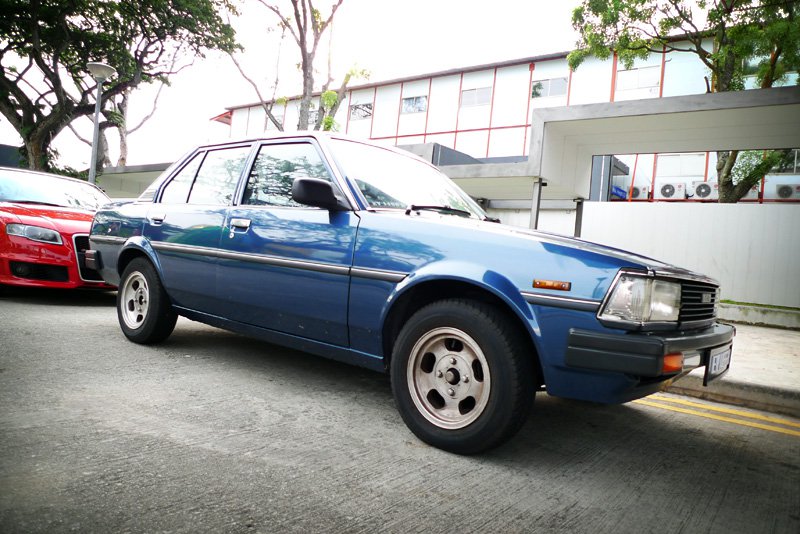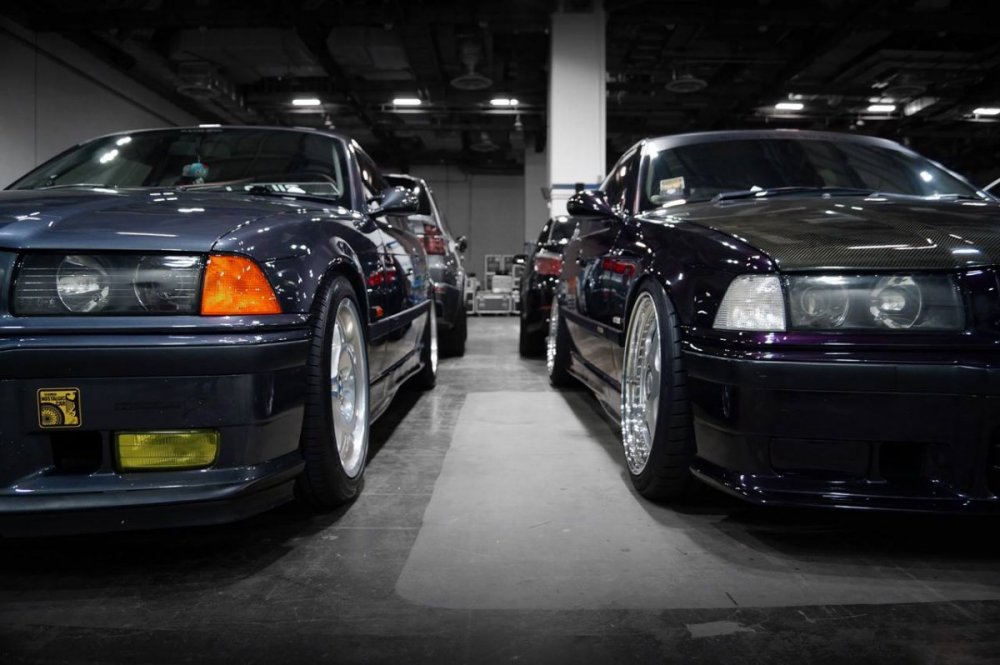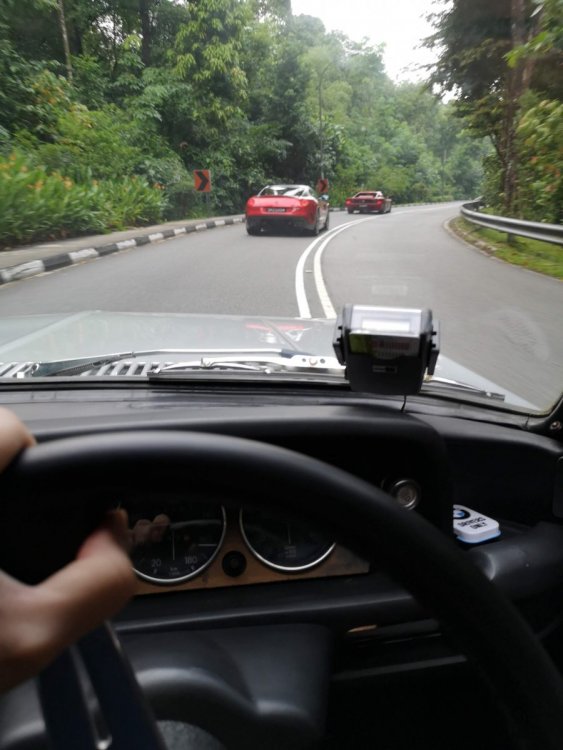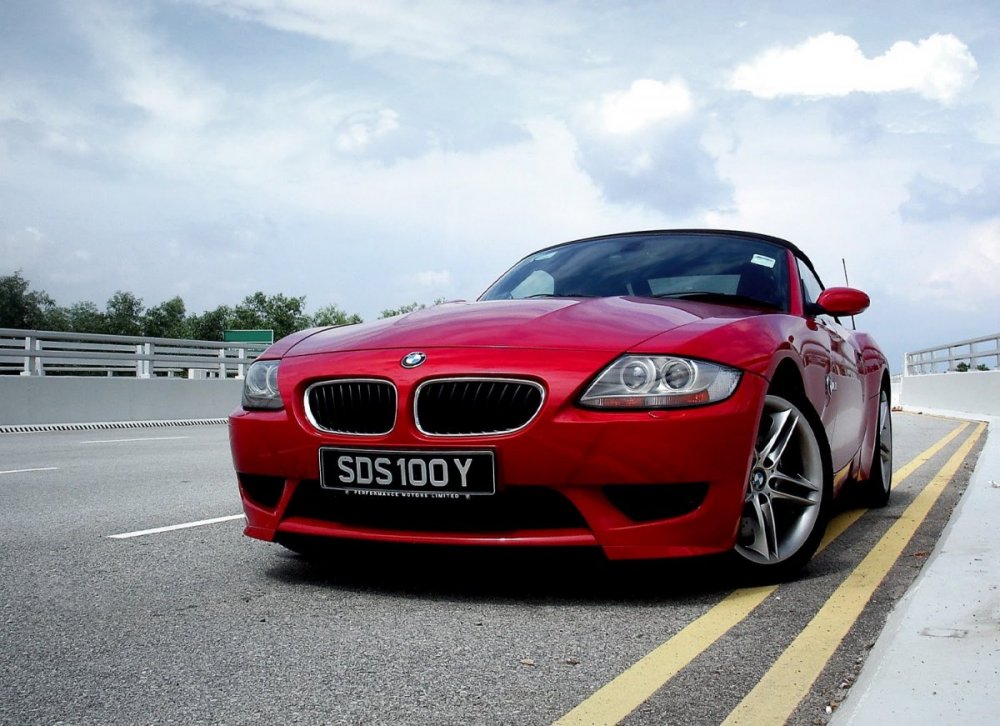Search the Community
Showing results for tags 'singapore'.
-
"Before you venture overseas, why not tour your own backyard first?" This line, from a gregarious guide, resonated with me prior to the start of the Raffles Lighthouse tour, which is organised by the Maritime and Port Authority of Singapore (MPA). Now, everyone knows that Singapore is a maritime trade powerhouse, but few realise that apart from the Tanjong Pagar and Tuas ports, our coastline is also dotted with docks and jetties. And as the second-busiest port in the world (Shanghai is the busiest), Singapore is home to several lighthouses, too. Five of them, including Raffles Lighthouse, are operated by the Maritime and Port Authority of Singapore (MPA). You'll travel by ferry from Marina South Pier to reach the Southern Islands Getting there First things first: Raffles Lighthouse is not the lighthouse you'll find in Raffles Marina. Raffles Lighthouse is the second oldest of the five lighthouses operated by MPA. It is located on Pulau Satumu, an island about 23km away from the mainland. It is the southernmost point of Singapore. To get here, one must join an MPA tour which costs around S$50 per person. The five-hour tour includes a guided visit to the Maritime Gallery, plus ferry passage to and from Pulau Satumu. Lighthouses operated by MPA, as seen on this map in the Maritime Gallery Prior to the tour, I mistakenly assumed that the entire trip took five hours because there was plenty to see and do at the lighthouse, and perhaps lunch would be catered as well. However, most of the time was spent travelling from Marina South Pier to Pulau Satumu and back. Three hours, to be exact, as it is a 1.5-hour ride each way. While the ferry chugged along, our guide enthusiastically pointed out the different types of ships (LNG, LPG, bulk carrier, etc.) we passed. Of greater interest were the outlying islands or Southern Islands. It didn't take long to see St John's Island, Kusu Island, and Lazarus Island. The Singapore skyline looks cool from this angle, too. The building in the foreground is Marina Bay Cruise Centre. In the distance, we saw Pasir Panjang Port, Brani Island, Jurong Island, and Pulau Bukom, home to the Shell Refinery. This part was the eye-opener for me. We all know that Singapore has other islands, but how many do you think we have in all? 10? 20? 30? Nope. My jaw dropped when our guide said we have 64 islands! Singapore is small relative to the rest of the world, but man, the geography lesson that afternoon was an eye-opener. Seeing the outlying islands and massive vessels anchored offshore was truly an experience. Here we are, a little red dot on the world map, yet all these vessels are on the way to one of our ports. Even if you regularly fly, the many ships dotting the sea is something you might not really notice, especially if you typically fly at night. You'll only have 40-45 minutes on Pulau Satumu, so take in the views while you can One-tree island 'Satumu' means 'one tree' in Malay. As the ferry approached the dock, the lighthouse seemed to shine in the sunlight. Completed in 1855, Raffles Lighthouse was designed by John Bennett, who also built Horsburgh Lighthouse on Pedra Branca. Next to the lighthouse are two network antennas. Photographing these structures is forbidden due to 'security issues' and attempting to feature them on social media could land you in trouble. At the very least, you might find parts of your pictures censored by the powers that be. At least that's what we were told. The waters surrounding the island are surprisingly clear Now, the lighthouse itself is not very large and unfortunately, you're no longer allowed to climb to the top. We were, however, ushered into an air-conditioned room and shown a collection of artifacts and memorabilia to add to the nostalgic feel. Interestingly, one of the 'museum pieces' was an unused armoury locker. Lightkeepers in the past must have needed rifles to defend themselves against marauding pirates in search of booty (or booze?). Each lightkeeper works on Pulau Satumu for 10 days before returning to mainland Singapore. If you despise crowds and love solitude, a career as a lightkeeper might appeal to you. It's too bad we couldn't interview the lightkeepers. But from what I could see, the cleaner air and gentle sounds of the waves lapping the shore make for idyllic surroundings. And even if you're far from civilisation, civilisation isn't far from you. I had 5G coverage the entire time, so you'll always be connected. I was glad that there was no souvenir shop, as it would have made the experience touristy (and not in a good way). But MPA obviously considered visitors' needs, as there were at least three toilets. Hoarding is good (sometimes) because we get to see stuff like this 4th Order Optic from 1968 Explore more I may have spent more time on the ferry than I did at Raffles Lighthouse, but that's not a bad thing. If I were on a faster vessel with a shorter travel time, I wouldn't have been able to hear the guide's stories. Knowing that Singapore is the second-busiest port in the world is one thing; seeing the vessel traffic is another. And learning a bit about our other islands was another pleasant surprise. Most of us don't know or don't care to know about the ports and maritime issues because they happen beyond our sight. But if there's one thing I learned, it's that without our maritime trade, commerce and life as we know it would slow to a crawl. Could I have learned about Raffles Lighthouse and our other islands online? Sure, but the experience wouldn't be the same. It's just like watching a travel vlog - you get ideas from the videos, but nothing beats travelling there yourself.
-
- maritime and port authority of singapore
- mpa
- (and 14 more)
-
I, for one, would not go there. ph driver who's smart enough won't go there to get jammed, for hours, for $10, $20 ? Grab keep promoting, high demand, but who's want to drive there for regular fare ? Even with surge, it's not enough to compensate your hours of waiting and crawling in the traffic, wasting petrol, time. ‘Worst transport experience’: Crawling traffic, long waits for rides frustrate S’pore Airshow visitors SINGAPORE - Waiting almost three hours for a taxi ride from the Singapore Airshow to her hotel was not something that senior corporate executive Inga Duglas expected after attending the first day of the event on Feb 20. When she eventually got into a taxi, her fare from Changi Exhibition Centre, where the air show is taking place till Feb 25, to central Singapore at 7.30pm came to $120, said Ms Duglas, expressing surprise that her ride was “so expensive”. “I was hungry, thirsty and exhausted,” the 38-year-old told The Straits Times on the evening of Feb 21. The 2024 edition of the biennial aerospace and defence exhibition has been drawing complaints about heavy traffic in and out of the showground, with some visitors telling ST that traffic arrangements were poorly organised. The first four days of the air show, from Feb 20 to 23, are for trade attendees. The air show is open to the public on the last two days, on Feb 24 and 25. Ms Duglas was among 23 trade visitors and exhibitors interviewed by ST about their experience getting into and out of the showground. Some said they had to endure several kilometres of crawling traffic into the exhibition centre due to reduced access to Aviation Park Road and Tanah Merah Coast Road, and were unable to secure private-hire car and taxi rides to and from Changi Exhibition Centre. Others spoke of the sky-high fares for these rides, and long queues for the air show shuttle, which plies between Singapore Expo and the exhibition centre. Visitors have to pay a location surcharge of $15, on top of the metered fare, for taxi services leaving Changi Exhibition Centre until Feb 25. Commercial executive Stanley Raj, 45, said it was the “worst transportation experience” he has encountered, when compared with other air shows he has visited, including the Paris Air Show in June 2023 and the Dubai Airshow in November 2023. To exit the showground on Feb 21 at around 5pm, Mr Raj waited more than 35 minutes for his private-hire car ride. That morning, his ride to the exhibition centre was stuck in a 45-minute jam because of lane closures and security checkpoints. Ms Jayne Low, who is part of an exhibitor’s team that drove to the air show, said she was caught in traffic for about 20 minutes at around 9am on Feb 21. This was because officers slowed traffic down significantly by checking the identities of all passengers in each vehicle with a parking label, said the managing director in her 40s. Ms Low, who has attended several editions of the Singapore Airshow, added: “It is the same thing for every edition... If they can manage (vehicular) traffic for Coldplay fans, they can surely do this for the air show.” ST reporters heading to the show experienced several instances of private-hire car drivers cancelling their rides to the exhibition centre on Feb 21 and 22. Part-time private-hire car driver George Liow, 37, said most drivers would not travel to the venue for a single fare, as they would need to navigate the jam and detours. He added: “Who in their right mind would come in all the way to the venue to pick someone up for a small sum of money?”
-
https://www.zaobao.com.sg/realtime/singapore/story20240206-1466643 "The dead body found floating in Marina Bay is a 21-year-old man." A few days ago a 20-year-old dude was chasing ppl with chopper. Today a 21yo was found dead in water (maybe suicide?) One wanted to take people's lives, the other (possibly) took his own life. And limpeh thought 20's is the time when one is full of energy, ideal, and ambition to conquer the world! Sigh...
-
As you may (or may not) have noticed, the Editorial Team here at Sgcarmart has started a new series, titled Sgcarmart Explores, where we look and recommend some of the more interesting spots across the various districts of Singapore. And save for the Christmas special of the series we did last December (please do catch it here, the whole team spent an entire day out driving and shooting to craft this one), we have always started each iteration of the series questioning the assumption that Singapore is a boring place. Thank God we have yet to incur the public ire that one Malaysian actor-host Hero Tai took after making remarks to the same effect on a Taiwanese show. But the sheer amount of backlash Mr. Tai received does beg the question: Is Singapore really boring to begin with? I mean, if you've been living here for some time, I'm sure you're also finding it difficult to find new activities to join every weekend (after attending to all those spill-overs from work aside that is). Take this video for a case in point, which explores a little more about why our island’s shopping malls (the typical retreat for many of us I reckon), are so boring. I don't see many comments disagreeing with the assumption that our shopping malls here are boring. Of course, there's more to do than just shopping here in Singapore, but I think Mothership's point about how high land rents drive all malls to simply house the most economically viable tenants and thus leads to most malls sharing the same popular chains is rather important. Surely some economic forces must be at play to explain why there's so much renovation and bubble tea stores around central Toa Payoh, unless the buildings here are especially dilapidated and somehow manage to attract only contractors that must have the very best refreshments? Perhaps we simply don't have the spare space here for less economically profitable activities. So let us take the assumption that Singapore is a touch boring. Well, what now? What can we do next as a nation to bring back a bit more interest to our sunny island? Do we, perhaps, need a bit of the grime that is commonplace in other cities? I personally reckon a little bit could be the answer here. I mean, there's plenty of people out there that bemoan the loss of Hong Kong's infamous walled city. Look at this video, and the comments to it for example: I promise if you're into architecture and urban theory this channel is a treasure trove. And on a side note, why are architects so attractive? But back to the topic at hand. I'm sure many are just looking back at Kowloon's Walled City with rose-tinted glasses. After all, as the video points out, unsavoury crime, drug use, and I'm sure all manner of abuse and exploitation were also ongoing before the city was demolished. But grit, after all, is forged by enduring difficult times. Would Van Gogh have painted The Potato Eaters were it not for his witnessing of the poverty that plagued the rural peasantry of the 19th century? Or would Francisco Goya have painted the Black Paintings if he had not lived through the depravity of post-Napoleonic Spain? And to steer back to the topic at hand once again, some of Singapore's more interesting areas (by my reckoning, that is) including Chinatown, Katong, Geylang, or Tiong Bahru, to name a few, are the products of a history that has seen a fair bit of lawlessness. Perhaps some tough neighbourhoods also spawn more interesting urban landscapes. Will time alone eventually carve Sengkang a character that is entirely different from the one that is present in Punggol? I like to think not. Join us as we share more about our other interests and bring you new places to visit! So instead of always looking out for the next hot new location to visit, perhaps we ought to put in a bit of thought into preserving what we have, to ensure that our existing neighbourhoods have the time to develop a character all on their own. The recent proposal of the preservation of People's Park Complex is a move in the right direction by the authorities, but we too can show our support for the preservation of our neighbourhoods by visiting the retailers within them, and participating in activities such as this series of Heritage Trails proposed by the National Heritage Board here to send a clear message to the powers that be that these spaces are still utilised and beloved. In the same spirit, the Editorial Team is going to put in the effort and take time out of our busy schedules to populate this space with some new and alternative content (just like our new Explores series) from fields that we already know and love beyond the various automotive material already available on Sgcarmart. All we ask is that you look out for our quips about everyday life and the issues that we feel need to be more spoken for (as well as a touch of YouTube recommendations and even some photographic content), here on the blog in the coming weeks. And maybe join us in stepping out of your comfort zone, to stop simply heading to the nearest shopping centre, and support some of the alternative destinations that we highlight in our Explores series. I hope you don't find any of it too boring. -Clarence
-
What do you all think of the upcoming 'Singapore first racing movie', Oversteer? I've have to say any effort in promoting motorsport and car culture is something good in my opinion, but from the promo photos and trailer, it just feel kind of half-effort and seems unlikely to capture the true Singapore car scene... In the first place the hero cars and location looks like it's all in Malaysia - granted, maybe filming in SG wouldn't be easy, but it seems like they didn't even try to replicate SG, i.e. make it seem like the setting is supposed to be Singapore. In this poster, you can see KLCC, and there was another photo floating about that shows the Malaysian number plates of the car, it seems like the setting of the movie is going to be in Malaysia. There are even people on Facebook poking fun, commenting that Singapore doesn't even have any street racing culture - which isn't the case, and will only be made worse if the film does end up to portray everything in Malaysia. The first teaser trailer shows an S13 drifting with a DC5 and EK chasing it. While drifting seems to be trendy and attractive to some movie-goers, but most would agree that it isn't really part of Singapore's street racing/ car culture scene. While Singapore might be small, we do have plenty of motorsports related history, including both legal and illegal avenues, cue the illegal drag races that happened at what is now the Tanah Merah Coast Road, Lim Chu Kang (40T), Seletar (20T), the curvy roads such as Old Upper Thomson which was once a GP circuit, the infamous 'Orchard Gudang', etc... My point is, I can't help but feel like the movie's gonna be plenty of wasted opportunities to show the interesting side of Singapore's car culture. That said, I hope that I'm wrong and the movie actually turns out to be a fun watch! So, what are your thoughts on this movie?
- 56 replies
-
- 5
-

-
.png)
-
SINGAPORE – High certificate of entitlement prices are not quelling motor dealers’ appetite to grow their portfolios. Premium Automobiles, the retail dealer for Audi, has just been appointed the distributor for Zeekr, a luxury electric vehicle (EV) brand from Chinese automotive giant Geely. The agreement was signed in late December. The showroom for the brand will be built in the Leng Kee Road area in the first half of the year, Premium Automobiles said in a statement sent to The Straits Times late on Dec 28. The service facility will be in the Ubi industrial area. When asked, Premium Automobiles said the details are still being finalised for their exact locations, but added that these will be dedicated facilities that will not be shared with Audi cars, which the company will continue to sell. Zeekr will be launched here with two models – 009, which is a multipurpose vehicle (MPV), and X, a sports utility vehicle (SUV). Deliveries will begin in the third quarter of 2024. The 009 MPV is over 5.2m long, which makes the six-seater bigger than the latest generation Toyota Alphard, which measures just under 5m. Premium Automobiles did not confirm the exact specifications of the models, but the 009 MPV has a promised range of 800km on a full charge. Its dual motor set-up offers maximum power of 400 kilowatts, enabling it to sprint from 0kmh to 100kmh in 4.5 seconds, and making it the world’s fastest MPV. The X SUV is about the same size as the Nissan Qashqai at 4.4m long. Two versions are offered in the other markets where Zeekr is already operating. One has a 200kW motor that powers the rear wheels and boasts a range of up to 440km and the other is a zippier 315kW dual-motor all-wheel-drive version that can cover 400km on a single charge. Singapore, Hong Kong and Macau will be the first places where Zeekr right-hand drive cars are available. https://www.straitstimes.com/singapore/transport/chinese-ev-maker-zeekr-s-cars-to-be-sold-in-singapore-with-deliveries-from-q3-2024
-
Sales of Mitsubishi cars in Singapore will be suspended in 2024 because of a revised emissions scheme that applies from Jan 1, The Straits Times has learnt. The development will not affect existing owners, who will continue to be supported by multi-franchise motor group Cycle & Carriage (C&C), which represents the brand. C&C’s spokesperson said the move to suspend sales of new cars was driven by the change in the vehicle testing requirement and the enhanced Vehicular Emissions Scheme (VES). Both take effect on Jan 1, 2024. The Mitsubishi showroom on Alexandra Road was devoid of cars on display when ST visited on the afternoon of Dec 27. In 2025, C&C expects to bring Mitsubishi back with new models that would fare better under these regulations, starting with a new Outlander sports utility vehicle (SUV). Exact details of this model have not been made public. Registrations of Mitsubishi cars in Singapore fell from 3,632 units in 2016 to 238 in 2022. It will end 2023 with just 61 units. https://www.straitstimes.com/singapore/transport/mitsubishi-to-suspend-sales-in-s-pore-as-revised-emissions-scheme-set-to-downgrade-some-new-cars
- 78 replies
-
- 1
-

-
- mitsubishi
- sales
-
(and 2 more)
Tagged with:
-
TIANJIN, China: Singapore and China on Thursday (Dec 7) announced that they will establish a 30-day mutual visa exemption agreement between both countries, amid a post-pandemic improvement in flight connectivity. The proposal was announced during the 19th Joint Council for Bilateral Cooperation (JCBC) meeting – the highest-level annual bilateral forum between both countries – held at the Hilton Tianjin Eco-City hotel with a range of agreements set to be signed. This is the first JCBC meeting to be co-chaired by Singapore’s Deputy Prime Minister Lawrence Wong and Chinese Vice Premier Ding Xuexiang. At the start of the meeting, Mr Ding noted how the number of Chinese students studying in Singapore has exceeded 40,000, basically recovering to pre-pandemic levels. He added that the visa-free arrangement would “provide greater convenience for people-to-people exchanges”. Mr Wong said Singapore hopes to even go beyond pre-pandemic levels in terms of direct flight connectivity. “This will be supported also by a mutual 30-day visa-free arrangement between our two countries, which will enable more people-to-people exchanges, thereby fortifying the bedrock of our bilateral relations," he added. Both sides are working out the operational details, with the aim of implementing the scheme in early 2024, the Singapore Prime Minister's Office said in a media release. Chinese citizens currently require a visa to enter Singapore. Singaporeans holding ordinary passports can enter China without a visa for 15 days if they are travelling for business, sightseeing, visiting relatives and friends, and in transit. China resumed this arrangement in July, more than three years after it was suspended because of the COVID-19 pandemic. This came on the heels of an upgrade in Singapore-China relations to an “All-Round High-Quality Future-Oriented Partnership”, after Singapore's Prime Minister Lee Hsien Loong visited Chinese President Xi Jinping in Beijing in March during an official visit. The JCBC reviews the substantive collaboration between Singapore and China and charts the direction of cooperation. Mr Wong, who is on a four-day official visit to Beijing and Tianjin, said during a bilateral meeting on Wednesday that he was looking forward to signing more than 20 memoranda of understanding and agreements at the JCBC meeting. https://www.channelnewsasia.com/asia/singapore-china-30-day-mutual-visa-free-arrangement-3971566
-
Start with this Singapore will face South Korea in Seoul in their first match of the second round of the 2026 FIFA World Cup Asian qualifiers. LIVE on Thursday 16 November 2023 from 6.50pm to 9pm
-
In this digital era, our government need to take network reliability and cyber security seriously. Unlike the in the case of service disruption brought upon by DBS and M1 in the past few months, if hospital network is down and the doctor are not able to retrieve patient's record timely, it could be a life and death situation! Websites of Singapore public hospitals, polyclinics down due to 'internet access disruption' Source: https://www.channelnewsasia.com/singapore/singapore-hospitals-errors-websites-not-loading-healthcare-polyclinics-3888231 SINGAPORE: The websites of all public hospitals and polyclinics in Singapore were down on Wednesday (Nov 1), with users reporting errors when trying to access them in the morning. Attempts to access the websites produced error messages saying their URLs could not be retrieved. The issue is due to an "internet access disruption" affecting all public healthcare clusters, said Synapxe, the national health tech agency. "Services requiring internet applications like websites, emails and the NUHS (National University Health System) contact centre are inaccessible," said the agency at about 1.45pm. It added that clinical services within the public healthcare network, such as access to patient records, remain accessible and unaffected. "We are currently working to resolve the issue and apologise for any inconvenience caused," said Synapxe, whose website was also inaccessible. The agency supports the operations of 46 public healthcare institutions, including acute hospitals and polyclinics, as well as around 1,400 community partners such as nursing homes and general practitioners. Singapore's public healthcare system is grouped into three clusters - SingHealth which runs hospitals and polyclinics in the east, the National Healthcare Group in the central region and NUHS in the west. The websites of Singapore General Hospital, National University Hospital and Tan Tock Seng Hospital were among those affected. The website of the Agency for Integrated Care (AIC) was also inaccessible. Websites of private hospitals, such as Mount Elizabeth Novena and Raffles Medical Group, appear to be unaffected. The Ministry of Health and HealthHub websites were working. CNA has contacted the hospitals, healthcare clusters, AIC and the Infocomm Media Development Authority for more information. This is a developing story. Please check back for updates.
- 17 replies
-
- 9
-

-

-

-
You might disagree with her, but you’ll be hard pressed to find much evidence against her case. What happened? Content creator and entrepreneur Wendi Chan, better known as @pinkkittywendi has been stirring the pot by making the bold but likely true statement that Singaporeans are the worst drivers and/or the most inconsiderate drivers in the world. If you are angered at the above statement, I present to you all our existing articles. And SGRV. She uses the example of how when trying to enter another lane in the event that someone has stopped in front of you, Singaporean drivers are more likely to speed up and close the gap instead of graciously letting you in. To support this, she mentions how in other countries there is no such behaviour, that it is "common courtesy" to let the person signalling come into the lane. Wendi also gave her own experience of another driver giving a “very rude sign” when she attempted to turn into the lane. No further elaboration on the sign but I’m sure we can all guess what it was. She ends off the video with her confusion on this behaviour, “I just don’t get it, what is that five seconds you can lose coming in and probably going out again because there was a vehicle stuck there? It’s just frustrating.” Online chatter Almost unanimous agreement. But as always, there are outliers. What do you think about Singaporean drivers? ========= Be the first to get the latest road/ COE news and get first dibs on exclusive promos and giveaways in our Telegram SGCM Community. Join us today!
- 6 comments
-
- singaporean
- singapore
- (and 4 more)
-
PSA. Please check your devices in advance so as to minimize disruption before 3G network is officially retired. From GPS to security systems: Older smart devices may not work after 3G shutdown Source: https://www.channelnewsasia.com/singapore/3g-network-shutdown-internet-things-iot-smart-devices-3718556 Smart devices bought 10 to 20 years ago could be affected by the 3G network shutdown next year, an expert says. SINGAPORE: The shutdown of Singapore’s 3G network by end-July next year could affect a minority of Internet of Things (IoT) systems, and this is your reminder to check that your devices will stay connected. Experts do not expect the impact of the shutdown on individual consumers to be significant, as those who use personal smart devices are likely to have kept these up to date. But IoT equipment that was bought 10 to 20 years ago could be affected when mobile network operators Singtel, StarHub and M1 retire their 3G services, an expert said. IoT devices function by connecting to a wireless network. Their applications range from GPS navigation devices to security and alarm systems and environmental monitoring devices. Some of these devices rely on 3G mobile networks to transmit data, and may not be compatible with newer 4G or 5G networks. The 3G technology entered the Singapore market almost 20 years ago, and the next wave of 4G developments took place in the mid-2010s, according to the Infocomm Media Development Authority. IoT adoption accelerated in the past few years, when 4G adoption was already widespread. But National University of Singapore Associate Professor Tham Chen Khong said he would not be surprised if there was still “2 or 3 per cent” of IoT equipment purchased in the early 2000s. There is rapid growth in the deployment of IoT devices, robots, drones and other remotely managed devices in the manufacturing, warehousing and “smart urban” sectors, said Dr Francois Chin, head of the 5G & Beyond Programme at the Institute for Infocomm Research. IoT system components – such as certain sensors, industrial equipment and other machine-to-machine devices that use 3G technology – could be “significantly affected” by the network shutdown, he said. Organisations that depend on these devices for data collection or operations will need updates or replacements to ensure continued connectivity. But companies should also look at “future-proofing” their business operations and not just replacing devices, said Dr Chin. Telcos and IoT service providers told CNA they are contacting customers about network migration and upgrading or replacing their devices if connectivity is going to be affected. A Singtel spokesperson said only a “very small proportion” of its IoT customers use 3G, and the telco is working closely with them to facilitate migration to newer networks. M1’s IoT services are not affected by the retirement of the network as its 3G SIM cards are 4G-ready, a spokesperson said, adding that customers would need to ensure their IoT equipment can support 4G. The spokesperson added that many customers are already working with their partners to customise the hardware with compatible SIM card inserts. M1 has also been offering equipment refreshes by providing 4G- or 5G-capable routers to customers that do not require any hardware customisation. One service provider is checking the vehicle monitoring systems of luxury cars across Singapore to ensure that their SIM cards are compatible with newer networks. The SIM cards of most of these vehicles were issued in their country of manufacturing, said Mr Patrick Lim, director for group strategy at Ademco Security Group, which provides security and fire protection solutions. The car manufacturers may use older SIM cards to save costs. Ademco will be communicating with the manufacturers about this, including on whether vehicle recalls will be needed to upgrade the SIM cards, he said. Another group at risk of losing connectivity are the enterprises that choose to run their security and fire protection systems by themselves in-house after the service provider has set it up, said Mr Lim. With time, these customers may forget about the arrangements in place, and may not be up to date on the 3G network retirement, he said. While the proportion of such customers is not big for Ademco, it is “significant enough that I remember them”, said Mr Lim. He added that during the previous retirement of the 2G network in April 2017, some such customers on 2G connections experienced disruption.
- 3 replies
-
- 4
-

-
- 3g network
- telco
-
(and 2 more)
Tagged with:
-
Start with this
-
New Tom And Jerry cartoon series set in Singapore will debut in August Produced in Asia, the three-minute shorts will premiere in August on Cartoon Network and HBO Go. Hazeeq Sukri, 26 Jul 2023 04:31PM https://cnalifestyle.channelnewsasia.com/entertainment/tom-and-jerry-singapore-series-cartoon-network-asia-366536 From Merlion to Marina Bay Sands: New Tom and Jerry series to feature scenes set in Singapore, debuts in August PUBLISHED ONJULY 27, 2023 9:05 AM By SUZANNE SNG https://www.asiaone.com/entertainment/merlion-marina-bay-sands-new-tom-and-jerry-series-feature-scenes-set-singapore-debuts?utm_medium=Social&utm_source=Facebook&fbclid=IwAR3i6OnnIvcnA_1jKC7ocZDH-O00_bTPDxXAF8YjXBE0ouEUR8k4u4U62kY#Echobox=1690420539 Tom and Jerry will chase one another through the streets of Singapore. PHOTO: Warner Bros Discovery Tom And Jerry, arguably the most famous cat and mouse duo in the world, are coming to Singapore. On Wednesday (Jul 26), Warner Bros Discovery announced that its first-ever localised Tom And Jerry series is set in Singapore. The new series, produced in Asia, will comprise seven three-minute shorts. Its premiere episode will air this August with more details soon to come. The series will premiere on Cartoon Network in Asia Pacific and HBO Go in Southeast Asia, Taiwan and Hong Kong, before being shown internationally. Said Christopher Ho, Head of Kids – Southeast Asia at Warner Bros Discovery: “This series brings back the iconic music and classic animation style from the Hanna-Barbera 1950s era – but with a modern Singaporean twist. With distinctive landmarks, backdrops and atmosphere, the Asian city-state is the ideal location to create a humorous addition to the Tom and Jerry canon. Working with homegrown creative talent in Singapore and across Asia, this project grows the much-loved franchise in the region and beyond.” The series is animated by Aum Animation Studios India, with stories and designs from Singapore-based Robot Playground Media and Chips and Toon Studios. This is not the first time Singapore has become the setting for a new take on a beloved children's franchise. In December 2021, Tsuburaya Productions collaborated with the Singapore Tourism Board on a few Ultraman specials set in Singapore, featuring iconic landmarks such as Gardens By The Bay. Even Mickey Mouse and his gang graced Singapore with their presence, appearing in a series of shorts where they explored Singapore's food, architecture, language and traditional wear.
-

Taking a leaf out of the book from neighbouring countries - 4 pax on an e-bike?
Fadevfast posted a blog entry in MyAutoBlog
In any other country, this may not be a shocking sight. But this is Singapore, so it IS a shocking sight. Watch the video to see why! What happened? A camcar travelling along Kallang Road to Sim avenue was very impressed to see a family of 4 travelling on an e-bike at 60km/h. The mother was calmly leaning back as she took a call, the two children sitting there and the father expertly keeping the bike balanced. Never rode an e-bike before so riders, comment down below how difficult this would be! Behind the camera, someone can be heard saying “Steady Lah... Vietnam style!” For context, entire families taking a singular bike for transport is common in our neighbouring countries, such as Vietnam. Here’s one from India. And here’s another from Indonesia. Usually, this happens when the families are unable to afford a car, and so can only depend on bikes as public transport may not be considered safe or reliable enough. With how COE prices are going, we can all be grateful that our public transport is among the best in the world. Online chatter Quite a few thought the video was in Vietnam until the Singlish commentary started. Others were angry as there seemed to be no action taken by the authorities to prevent such dangerous behaviour on our roads, especially since they are going well over the 25km/h speed limit set for e-bikes. ========= Be the first to get the latest road/ COE news and get first dibs on exclusive promos and giveaways in our Telegram SGCM Community. Join us today! -
Hot on the heels of the rather erm, provocative XM, BMW Asia has now brought along its smaller, though no less anticipate stablemate, the M2 to our local shores and we were lucky enough to be privy to an early media preview. While the new car is slightly larger all around (except for height where 7mm is shaved off) from its predecessor, an almost 50hp bump in power (from the M2 Competition) means the new car is even quicker than the car it replaces, though only by .1 of a second for both gearbox options. Yes, gearbox options, because thanks to the heros of homologation at BMW Asia, you can spec your brand new M2 with a third pedal and 6 do-it-yourself forward gears should you feel the 8-speed automatic isn't quite "macho" enough. And macho might be the words that come to mind when chancing upon the M2. While it might not be as pretty as the previous M2, which let's face it, is one of the best looking BMWs out there even today, the new car does have its own distinct visual flavour. Personally, I think the front end is too fussy and overdesigned. Where aesthetics are concerned for this generation, the less well-endowed M240i in Thundernight Metallic takes the cake. You know the drill. BMW's S58B30. 3-litres, Twin Turbos, 6-cylinders all lined up to punch out a heady 460 horses and 500Nm of torques. A healthy dollop more punch than the considerably more expensive Porsche 718 Cayman GTS. Which then brings us to the price. Whilst never intended to be anywhere near "cheap", the new car represents a considerable increase from its M2 Competition predecessor and an even bigger leap from the original M2 launched back in 2016. At S$380,000 (without COE), the new M2 is a rather expensive proposition, but nowadays, what isn't?
-
https://www.straitstimes.com/singapore/more-spending-on-healthcare-does-not-mean-a-healthier-population-ong-ye-kung SINGAPORE - The Republic’s healthcare challenge in the coming years is not spending more, but to ensure that Singapore does not go the way of many OECD countries where healthcare costs are “spiralling and escalating out of control”, Health Minister Ong Ye Kung told Parliament on Wednesday. Better health outcomes can be achieved by continuing with Singapore’s sensible and practical approach of having different layers of safety nets – subsidies, MediShield Life, MediSave and MediFund – and combining it with the Healthier SG strategy to reduce the sickness and disease burden even as the population ages, he added. Mr Ong was responding to Progress Singapore Party (PSP) Non-Constituency MP Leong Mun Wai’s assertion on Tuesday that the Government has not spent enough to cover Singaporeans’ healthcare costs, and should be spending more to help with medical bills. Mr Leong had cited data to show that the Government’s share of healthcare expenditure is lower than the average among Organisation for Economic Cooperation and Development (OECD) countries. The majority of the 38 OECD members are regarded as developed countries. Mr Ong noted that it is widely accepted by health economists that spending more on healthcare does not mean better outcomes. For instance, the United States and Britain spend about 17 per cent and 10 per cent of their gross domestic product on healthcare respectively, compared with Singapore’s 4 per cent. Despite this, both those countries are facing a high incidence of chronic illnesses and high obesity rates, and expected lifespans there are lower than in Singapore, he said. Conversely, Singapore has delivered good outcomes given how much it is spending, while keeping healthcare affordable for the middle- and lower-income groups, Mr Ong added. Seven in 10 Singaporeans in subsidised hospital wards do not pay any out-of-pocket expenses, and nine in 10 pay less than $500 in cash. “So when Mr Leong asked the Government to spend more to lower out-of-pocket expenses further, he really meant to channel resources to unsubsidised patients, that is, those staying in A class wards or private hospitals,” he said. “This is where the big bucks and big expenditure are, and it will push our healthcare expenditure and spending to the levels of OECD countries.” Mr Leong also failed to mention that such spending ultimately has to be raised from the people through taxes, and made no mention of where PSP will get the funding from, Mr Ong added. The reality is that government healthcare spending has already been rising, having tripled between 2011 and 2020, and is expected to triple again between 2021 and 2030, said Mr Ong. Mr Leong had also called for increased spending from the Pioneer Generation (PG) and Merdeka Generation funds, as he felt that spending from those funds has been small relative to their total assets. This understanding is misplaced as both funds were sized based on the projected lifetime cost of the benefits, said Mr Ong. He noted that PG members are as young as 74 and “still have quite a bit of runway ahead of them”, though the Government will continue to review the adequacy of both funds. The Health Minister also responded to Workers’ Party MP Jamus Lim’s suggestion that Singapore’s medical infrastructure is too lean, and that the current hospital bed crunch speaks to a need to relook healthcare capacity. Mr Ong said every country is facing a similar crunch post-Covid-19, including the OECD countries despite their higher bed-to-population ratio. The reason for the bed crunch here is that the average length of hospital stay has increased by 15 per cent compared with before the pandemic, he said. This is likely a result of more older people falling ill due to an “immunity debt” as safe management measures were lifted, a problem exacerbated by poorer health from social isolation amid Covid-19. Singapore is catching up on healthcare capacity as projects delayed by Covid-19 – such as the Tan Tock Seng Hospital Integrated Care Hub and Woodlands integrated health campus – are now being completed, said Mr Ong. More transitional care facilities will also be set up to offer rehabilitative care for more stable senior patients. Closing the debate on the motion to support healthcare here beyond the pandemic, Nominated MP Tan Yia Swam responded to Mr Leong’s charge that drug prices were “marked up unreasonably for non-subsidised patients” in order to cross-subsidise others. Dr Tan, who is a breast surgeon, asked if Mr Leong had evidence that this was happening, and noted that non-subsidised patients are those who opt for an A-class or B1-class ward, or foreigners. “I, as a doctor, would think that allowing market forces to determine costings is fair, or would Mr Leong also want taxpayers to pay for everyone?” she asked. Mr Leong said he had heard “feedback from residents (that) they pay different prices when in different classes”, and that while it is understandable for services to be priced differently based on ward class, this should not be the case for drugs. The NCMP had earlier called on the Government to centralise drug procurement across public and private medical institutions, as doing so would reduce the cost of medicine. In response, Mr Ong said Singapore deliberately chose to have a variegated market for healthcare, with private-sector doctors having different business models. For instance, some private doctors charge very low consultation fees but make a margin on the drugs they sell, while others do the reverse, he said. “Sometimes you want to let market forces operate, but at the same time have some discipline through... what we subsidise and what we don’t, and I think that’s how we rein in unnecessary healthcare costs,” said Mr Ong.
- 19 replies
-
- 4
-

-
- healthcare
- spending
-
(and 5 more)
Tagged with:
-
https://carsnkopi.wordpress.com/2023/05/08/a-rocky-road-ahead-the-tough-realities-for-todays-young-car-enthusiasts-in-singapore/ It wasn’t easy being an automotive fan when I was a young, overweight boy growing up in neighbourhood schools as my strange obsession with machines so out of reach naturally led to constant ridicule from my peers. Yet, I think I was lucky. Lucky because I spent my primary and secondary schooling days in the glorious 80s and 90s. Which meant that after wasting no time joining the workforce after the army (and through sheer effort, perseverance, plenty of luck and a small loan from my amazing girlfriend), I was smack right in the middle of 2008 and 2009 when the sums added up to allow me to buy my very own set of wheels. Now, if you’ve been paying attention. The years 2008 and 2009 are rather significant. Because for us car-owning, car-loving geeks in Singapore, those were the glory days when COEs dropped to levels so low, rumours were going on about how the Government might even consider scrapping the entire system altogether. Alas, as we now know, that never came to pass. Quite the opposite in fact. Today, our Transport Minister S. Iswaran told Parliament that as a one-off exercise, the Land Transport Authority (LTA) “will bring forward and redistribute the supply from five-year COEs due to expire in the next projected supply peak”. Essentially increasing the supply of certificates of entitlement (COEs) by 24 per cent for smaller, less powerful cars (Category A) and 15 per cent for bigger, more powerful cars (Category B) for the current three-month quota period until July. While it might seem like a sign of relief to the general public, those of us with a tad more vested interest in the matter will understand that such a measure will only serve to sully any chances of a steep increase in COEs quotas in the near future and as such, all hopes of a significant drop in COE prices. It seems to us that the powers that be are happy with COE levels hovering where they are now and have no interest in curtailing what had led to such a dramatic rise. If you are a young enthusiast in Singapore dreaming of one day owning a fun new performance car, I feel for you. Add to that, massive increases in taxes for what many consider their dream cars now mean that even when used, those dreams will no longer be attainable for the vast majority. It doesn’t stop there, with OMVs for many of these beauties now capped at 60k, it would logically make little sense to deregister them, meaning that the majority of these cars will have their COEs renewed once they hit the 10 year mark, which means even less COEs will return to the pool the next decade, which, you guessed it, will only mean even higher premiums for COEs. If you are a young enthusiast in Singapore dreaming of one day owning a fun used performance car, I feel for you. What about cars that have been registered way before these recent rules were implemented? Well, a quick glance through our local automotive classifieds will be more than enough to show you what happens to the resale market when the price of a base-spec Toyota Altis is now asking for over S$160,000. It’s not all local forces at play here of course, with the advent of social media, the hype surrounding certain makes and models of old performance machines have led to a series of “taxes” laid on. “JDM tax”, “Tofu tax”, “Initial D tax”, “Mighty car mods tax”, they all basically mean the same thing, astronomical prices increases on cars that just a couple of years ago no one would even bother to even look at. It’s not all the internets fault of course, the pivot towards SUVs have also contributed to this calamity as the world suffered from years upon years when automotive manufacturers thumbed their collective noses at enthusiasts who were literally begging for the affordable, attainable fun legends we grew up loving. But nein, it was all for nought. To rub salt into our wounds, Mitsubishi even brought out their new Eclipse as an SUV. Today, Mitsubishi is a shadow of its once glorious self and they really only have themselves to blame. And so, with manufacturers no longer building brand new fun sports cars for a period of time, the market for used fun sports cars naturally (with the help of social media) blew the F up and along with that, dragging up the prices for pretty much everything else with a remote chance of being a “classic”. And in a country where such cars are especially rare, you don’t need to be a genius to know what has happened. Things are starting to change of course, we Toyota leading the charge with their GR Yaris, GR Corolla and Supra, but then, you’d have to contend with their equally charged up brand new prices. If you are a young enthusiast in Singapore dreaming of one day owning a fun classic performance car, I feel for you. So, where do we go from here? It’s a tough one to answer. As covered in the media recently and I’m sure plenty of us have talked about it, we all know who are the ones driving up the prices of COE fast and furiously, and I’m sure we all know (even if some might not want to admit it) why nothing is being done or even mentioned about curtailing these car-sharing companies and other PHV registered vehicles. As mentioned once again by our transport minister, “we must expect the long-term trajectory for COE prices to be upwards“. In short, don’t expect COEs to ever come down, and don’t expect the current Goverment to ever be kind to your car-loving dreams. With so many obstacles now neatly in place, It is going to be a painful, rocky road ahead for all car-lovers. And so, if you are a young enthusiast in Singapore, I feel for you and hope that you will also get lucky one day. I’m afraid with the way things are, mine might be running out come December 2026.
- 111 replies
-
- 16
-

-

-

NV200 takes out a Domino's delivery bike at a discretionary right turn
millanda posted a blog entry in MyAutoBlog
TL;DR - Domino's Pizza delivery bike plays real-life game of dodge the NV200 at a discretionary right turn Pizza delivery gone wrong. Watch this 40 second clip of the collision. What Happened? A Nissan NV200 collided with a Domino's Pizza delivery bike at the discretionary right turn junction on Pioneer North Road in Singapore, under the PIE Flyover. The incident caused damage to both vehicles and raised concerns about road safety for delivery drivers. According to eyewitnesses, the Domino's Pizza delivery bike was traveling straight on Pioneer North Road when the Nissan NV200 made a right turn without signaling, causing the collision. The delivery driver was thrown from his bike and sustained minor injuries, while the NV200 suffered significant damage to its front end. Online Chat Amongst the hundreds of comments, the majority of them were pinpointing that this road is extremely dangerous. Hello @LTA? So please have more patience for people who are delivering your food, they’re delivering more than just your pizza - it comes with a side of risk. Nissan NV200 driver and the rider must have forgotten they're not playing Mario Kart… Takeaway The incident highlights the importance of road safety, especially at discretionary right turns where accidents are usually most seen at such junctions. Delivery riders, who are often required to navigate busy roads and make multiple stops in a short amount of time, make them the ones that are most at risk of such accidents. Above all, all drivers should practice cautiousness on the road and be extra vigilant - treat all junctions as accident black-spot zones and ride expecting the unexpected. ========= Be the first to get the latest road/ COE news and get first dibs on exclusive promos and giveaways in our Telegram SGCM Community. Join us today! -
https://www.nytimes.com/2023/04/12/opinion/international-world/singapore-autocracy-democracy.html By Farah Stockman Do benevolent autocracies get better results than democracies? I’ve pondered this question since last summer, when I heard highly educated Kenyans tell me that democracy hadn’t brought the economic development they sorely need. They gushed about the way that Lee Kuan Yew, the founding father of modern Singapore, transformed his impoverished city-state into one of the wealthiest societies on earth in just one generation. Consider that in 1960, Singapore and Jamaica had roughly the same G.D.P. per capita — about $425, according to World Bank data. By 2021, Singapore’s G.D.P. had risen to $72,794, while Jamaica’s was just $5,181. It’s no wonder that Lee Kuan Yew has become a folk hero. It’s not hard to find people from South Africa, Lebanon and Sri Lanka praying for their own Lee Kuan Yew. Last month, President Biden hosted his second democracy summit and gave a speech about the epic global struggle between democracy and autocracy. Singapore — a U.S. partner rated “partly free” by Freedom House — was not invited. But Washington’s talking points about the imperative of democracy ignore a simple fact: Some autocrats are admired because they get results. While established democracies do better economically than autocracies overall, the handful of autocrats who focused on economic growth — rather than their own Swiss bank accounts — have managed to outperform fledgling democracies, according to Ronald Gilson, professor emeritus of law and business at Columbia University, who co-wrote a 2011 paper, “Economically Benevolent Dictators: Lessons for Developing Democracies.” Chile under Augusto Pinochet, South Korea under Park Chung-hee and China under Deng Xiaoping stand out as countries that achieved wholesale economic transformation, while weak democracies stagnated. The paper, which was co-written by Curtis Milhaupt of Stanford Law School, spells out why benevolent authoritarians have an easier time plugging their countries into the global economy. Elites tend to resist big changes that would cut into their own bottom lines, even if those changes are good for the country. Autocrats have more tools to get them on board. An autocrat’s word can convince job-creating investors that their businesses will be protected, filling the void of a shaky court system. In a benevolent autocracy, legitimacy often comes not from elections but from the ability to show material improvements in people’s lives. In a democracy, leaders are often too busy fending off political challenges to make grand economic plans. They are frequently voted out of office before they can see those plans through. To win elections, politicians make short-term promises — like cutting taxes while increasing benefits — that don’t always make economic sense in the long run. But benevolent autocracies have fatal flaws, too. Benevolent dictators are hard to find. There’s no guarantee that they will stay benevolent or that their successors will be as competent. After a country successfully transitions its economy, the advantages of this system seem to fade. But by then, a system of nearly unchecked power at the top has been entrenched. Singapore is a case in point. Lee Kuan Yew contended that people don’t pine for democracy. First and foremost, he said, “they want homes, medicine, jobs, schools,” according to the 1998 book “Lee Kuan Yew: The Man and His Ideas.” He provided those things by pairing business-friendly policies from the West (predictable courts, low taxes, zero tolerance for corruption and an embrace of meritocracy) with socialist-leaning policies from autocracies (heavy government involvement in economic planning and little tolerance for dissent). He created a vast system of public housing, where about 80 percent of Singaporeans currently live. People buy and resell long-term leases to government-built apartments with money the government essentially forced them to save. Singapore holds elections, but the ruling party, which controls much of the media and a host of lucrative jobs, has remained in power since independence. Anyone who has visited the city-state of nearly six million people has seen how much cleaner and safer and more orderly it feels than the United States. Its airport doubles as a high-end mall. Public gardens bloom free of the litter, pickpockets or homeless encampments that have become familiar sights in U.S. cities. Robberies are so rare — and surveillance so pervasive — that some high-end bars don’t even lock their doors at night. Ferraris and Lamborghinis are everywhere, as if the slogan “a chicken in every pot” had turned into “a sports car in every parking space.” But now, eight years after the death of Lee Kuan Yew, Singapore is at a crossroads. It’s being run by his eldest son, Prime Minister Lee Hsien Loong, who leans heavily on his father’s legacy. Elections for the largely ceremonial post of president are expected in September and parliamentary elections are due by 2025. The prime minister’s potential successor has already been picked. But the ruling People’s Action Party has never looked so vulnerable. Critics say Singapore is becoming more like a plutocracy, in which well-paid yes men with the right connections to the Lee family rise up the ranks. Today, Singapore is a place where forklift operators can face jail time for taking one-dollar bribes but executives from the Singaporean conglomerate Keppel — who paid millions in bribes, according to the U.S. Justice Department — got off with “stern warnings.” (Officials in Singapore have said that they didn’t have enough evidence to take the case to court.) The trouble is that the system requires someone like Lee Kuan Yew at the top — strict and charismatic, as Michael Barr, author of “Singapore: A Modern History,” told me. “But no one who has that political skill would ever rise to the top today because that person would be regarded as a threat,” he said. Perhaps the clearest sign that something in Singapore has gone wrong is the fact that Lee Kuan Yew’s youngest son and one of his grandsons say they are now living in exile, fearful that they would be arrested if they ever returned. “My uncle doesn’t want competing claims to legitimacy,” Lee Kuan Yew’s grandson Shengwu Li told me over a cup of tea in Cambridge, Mass. “Authoritarian systems don’t survive by taking chances. If they think there’s a 5 percent chance I’ll be a problem for them, they want that to be zero.” The irony is that Mr. Li, a 38-year-old assistant professor of economics at Harvard who was just awarded a top honor in his field, doesn’t have political ambitions. Soft-spoken and cerebral, he says he’s happy working on his theorems in a place where nobody gives him special treatment because he’s related to Lee Kuan Yew. After 10 years studying at Oxford and Stanford, he got used to certain freedoms. In the summer of 2017, while he was visiting his parents in Singapore, he wrote comments in a private Facebook post that criticized the government for using the courts to silence its critics. The government is “very litigious and has a pliant court system,” he wrote. Soon after, he got a tip that he was about to be prosecuted for it. He hurried back to the United States. Even during the Trump administration, which was known for its harsh treatment of immigrants, he felt relieved to land on American soil because he knew there were independent judges, he told me. He was convicted in absentia in Singapore for scandalizing the judiciary and fined $15,000, which bars him from running for Parliament for five years. Last month, officials in Singapore announced an ongoing police investigation of Shengwu Li’s parents, who are accused of manipulating the then-90-year-old Lee Kuan Yew into changing his will and lying about it afterward. The accusation stems from a simmering disagreement over the fate of the family home, which Lee Kuan Yew said publicly at times that he wanted demolished after his death. Lee Hsien Yang, Lee Kuan Yew’s youngest son, says he has been fighting to honor his father’s wish not to have a cult of personality built around the house. But he says his elder brother, the prime minister, wants to preserve the house as a national monument to bolster his own political legitimacy. Lee Hsien Yang spoke out publicly against his brother, only to get hit with an investigation. Eventually, he fled the country, like his son. It seems to be an example of what Kenneth Paul Tan, a Singaporean professor of cultural studies, calls the “politics of evermore sophisticated bullying.” At its core, the fight isn’t about a house or a will. It’s about the future of Singapore. “The institutions in Singapore, whether it is the judiciary, the civil service, the army, the institutions of higher learning, have all gradually come under direct control in a way that stifles independent thinking and challenge,” Lee Hsien Yang told me. Lee Kuan Yew would solicit different views and occasionally change his mind, he said. “Today, the Singapore authorities no longer have people who would challenge the system to say, ‘Here’s my view. I don’t think you are doing the right thing.’ They are too well-paid.” (Ho Moon Shin, a government spokesperson, denied that Lee Hsien Yang and Shengwu Li are in exile, saying they are traveling on Singaporean passports and are free to return home. She also said Prime Minister Lee Hsien Loong recused himself from the cases involving the family house.) Lee Hsien Yang and his son Shengwu Li avoided politics for most of their lives, but since the feud over the house burst into public view, both have voiced sympathy for the political opposition, lending the legitimacy of that crucial family name. Yet their ability to help the opposition has been curtailed by the accusations against them. The episode has exposed the cracks in Singapore’s celebrated system. If Lee Kuan Yew’s son and grandson can feel compelled to flee, what can happen to ordinary people? Political scientists weren’t sure that Singapore’s highly successful system would outlast Lee Kuan Yew. By the end of his life, even the great man himself spoke of preparing for the day when his party would lose power. That’s the thing about benevolent autocracies: They tend to expire. They either cease to be autocracies — as happened in South Korea and Chile — or they cease to be benevolent.
-
Seriously?
- 26 replies
-
- stop false accusation
- stop
- (and 14 more)
-
We love cars! Or at least, I do. I assume you do too, since you’re on this platform. But as an aspiring car owner, I also grapple with the realities of living in Singapore. We have again been acclaimed as the “World’s Most Expensive City” together with New York City, our inflation is the highest it’s been in 15 years, and our homes start at hundred of thousands of dollars. In the face of such problems, a car seems like the least important of my worries. But let’s say in about 10 years time (can you tell I’m a young person yet?) I have enough money to get a car. Nothing special, a Toyota Corolla from Sgcarmart perhaps? How would I get there? And what are the costs that I’ll face afterwards? Join me and let’s see if buying a car is still worth it in Singapore. The many hidden costs of owning a car in SG To understand what it takes to buy a car I think a good place to start is to see the costs involved. As I’m sure you all know, we need to deal with COE (Certificate of Entitlement). It’s a metaphorical piece of paper that you buy in order to give you the right to own and use a car in the streets of Singapore. The COE lasts for 10 years. After 10 years, you have the option to refresh the COE and continue to use your car, or let it expire and be forced to de-register your car. Let’s say I’m a first time buyer, and that I’m getting a brand new Toyota Corolla Altis. The standard variant. This is what you’ll see in the official Toyota website. Now don’t worry, this is already taking into account COE for this year, as of April 2023. This specific model makes 96 brake horsepower with a 1,598cc engine. Therefore, this model would qualify for a Cat A COE. This category is for cars that have an engine less than or equal to 1600cc & make 130bhp or less. However, let’s take a look at how much this COE costs as of March 2023. You have spent almost 2 thirds of the entire car’s cost on the right to have gotten the car in the first place. Now let’s fast forward 10 years. The maths is going to get real complicated real quick. 10 years later.... I’ve had a wonderful time with my Corolla. It has served me well. It has seen me through so many things. My marriage. My first kids, my divorce, my wallowing loneliness. Ok, that got dark but you see what I mean. Some time has passed. I now need to make a decision to renew my COE or let it expire. To renew it, I will need to pay the PQP (Prevailing Quota Premium) of the COE. PQP is the moving average of the COE prices in the past 3 months. To calculate PQP, simply take the existing COE prices of the most recent three months and find its average. We can take the PQP from the above image and see that it is $85,845. I’ll let you decide whether it’s worth renewing the COE. In another scenario, let’s say I let it expire. And there’s actually a proper reason to do this called rebate. For any fellow Gen Z, this is our “cashback”. Upon de-registering a vehicle, we get a certain value by adding up our COE rebate and PARF (Preferential Additional Registration Fee ) rebate. Our COE rebate is based on the Quota Premium paid and the remaining COE left. Here’s a formula: Your COE rebate = [(Quota Premium Paid x Number of months left)/120 months]. Here’s an example: It is 2021. Adam has 12 months of COE left on his car. Assuming that his Quota Premium (QP) paid back in 2012 was $40,000, the COE rebate he will receive is ($40,000 x 12) / 120 = $4,000 PARF rebate is based on the Additional Registration Fee (ARF) value. Your PARF rebate = [ARF x % based on the age of your car] ARF is a tax imposed upon the registration of your vehicle, which depends on your car's Open Market Value (OMV). A car's OMV is the original cost of production of the vehicle before surcharges, taxes and the dealer's profit. Here’s a table to help you visualise the PARF rebate. According to Budget Direct Insurance, the Toyota’s OMV is $19,436. So the ARF for this car, as it is less than $20,000, will be 100% of its value at $19,436. However, as in this scenario I have spent over 10 years with my car, there will be no PARF rebate. I will also have no COE rebate because I have no months left on that either. I will get a tidy sum of... So if I'd like to continue using my vehicle after likely having paid for it in full, I'd need to once again pay for a permit worth several times over the actual cost of my car, even after taxes. Some people have clearly gotten sick of this, like this biker, who started a discussion on Facebook after showing why he doesn't use his motorycle anymore, calling it a ransom. It's clear that many people felt the same as him, calling the COE system a con or daylight robbery, that once their COE expires, they will likely stop using their vehicle. And yet, COE is at a record high this year. So I'd like to ask you all, what does owning a car mean to you? For more information about renewing COE, do head over to this guide on COE renewal. ========= Be the first to get the latest road/ COE news and get first dibs on exclusive promos and giveaways in our Telegram SGCM Community. Join us today!



